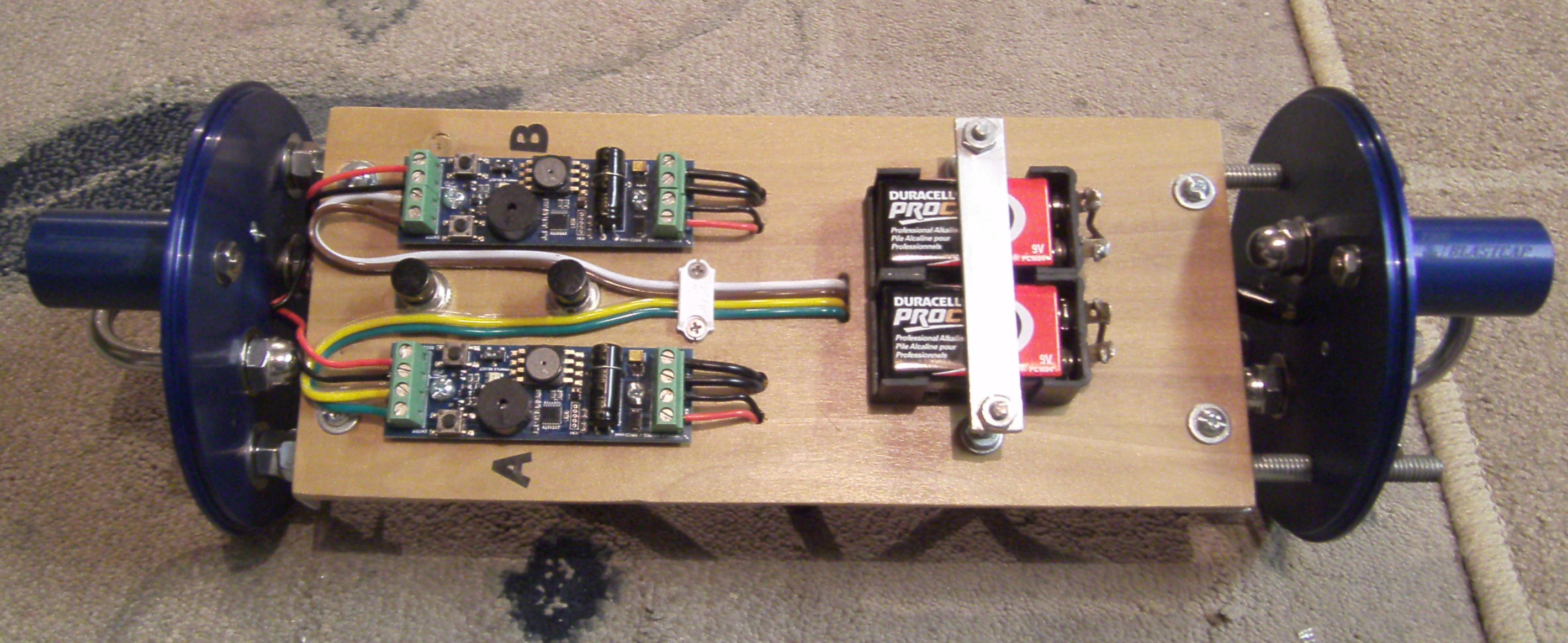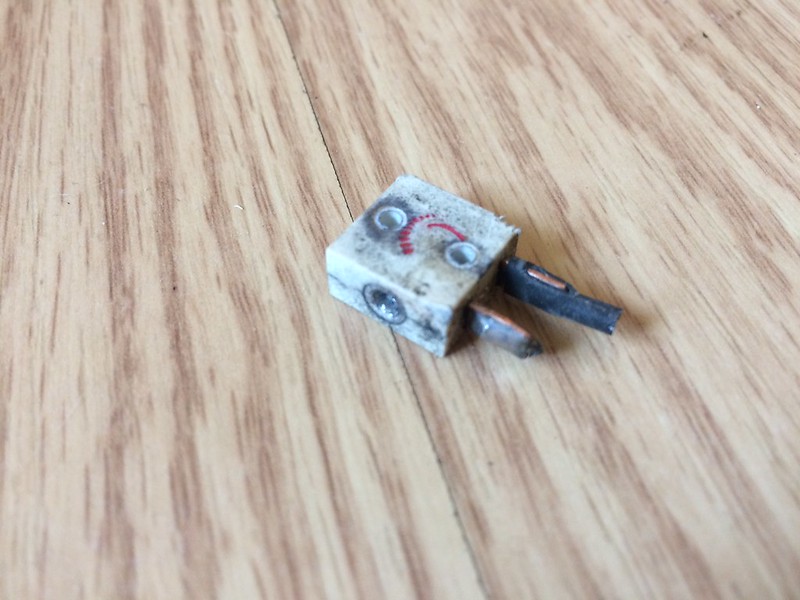Using a plug, I always had a big enough port hole in the rocket to insert the plug to arm the electronics (insert before flight). This insertion port is big enough that it also serves as port for the barometric altimeter.
Using a magnetic switch, I don't need a big port hole. One of the first time I used a magnetic switch on a new rocket, I forgot to drill a port to get air to the altimeter. The altimeter couldn't sense the outside air pressure, and therefore didn't pop the chute at apogee or at altitude. It came it ballistic.
Luckily it wasn't anything big or expensive, and I was able to recover the chutes and altimeter for re-use. Learned from it.
In the past I had a phase where I liked to fly the really fast burners (Vmax, for example) just to see whether the fins would stay on ;-)
Fast burning motors create a high G force at launch.
At the time I used a similar switch, but with "remove before flight", meaning that it closes when removing the non-metal plug/rod/pin, arming the altimeter. The contacts inside the switch are just spring metal that spring together when the pin is removed. I don't know whether the switch was worn, or the orientation of the switch to the launch direction was ideal to be affected by G forces, but at launch it momentarily lost power to the altimeter causing it to reset. The result was that the altimeter was still rebooting at apogee, but recovered, armed itself or detected a launch (don't know how) and pushed the main out at 200 meters altitude. Of course it was coming in ballistic, and shredded the main chute. Damaged the rocket beyond repair, but the electronics were fine.
Looking at the recorded flights from the altimeter, one launch recorded about a half of second of data (on the ascent), and a second launch recorded a launch, but was able to detect altitude and pushed out the main.
After that happened, I decided to go with "Insert Before Flight" switches (Normally Open) that others were using. Had to build a special tool to insert the pins, and had to tap the end of the pins to work with the tool. It's a bit more work, but I feel it's safer.
That said, most folks will never have failures with "Remove Before Flight" switches. It may be a consideration for anyone doing extreme flights or high G flights to use another switch that can't spring open under G forces.









